“I regard [AR] as a big idea, like the smartphone. The smartphone is for everyone...I think AR is that big. It’s huge."
Tim Cook
Each new evolution in technology poses one key question: who will identify its value first and reap the greatest reward and who will scramble to catch up before it's too late?
3D visualization and augmented reality (AR) aren't exactly new technologies. The image of red & blue foil lenses on paper frames is old enough to seem quaint. The Google Glass already seems like a cautionary tale from the deep past. However, in recent years, we have seen critical technical advances that have positioned these technologies to become ubiquitous in the near future.
In March of 2021, Facebook announced that a full 20% of its workforce is now dedicated to AR & VR development. That represents an investment of a truly stunning size by a company that has earned a reputation for smartly investing in monetization and focusing on generating bottom-line returns.
After 2020, a year of unprecedented growth in eCommerce sales, smart companies are allocating resources to improving their digital customer experiences in 2021. The need is clear. But are 3D and AR key components of an optimal customer experience? The data says yes, and this guide will show you how.
We'll begin by discussing the demonstrated use cases for these technologies in modern businesses. Then, we'll dig into each of the ways in which 3D and AR applications will improve your bottom-line results. Let's get started.
One platform, three ways to visualize your products Learn More
PART 1:
USE CASES
USE CASE #1
Virtual Photography
Some of us are old enough to remember what it was like when digital cameras first entered the marketplace. Digital was fun and easy to use for hobbyists, but way too few of us expected that digital would take over the market from film. Fast forward to today and digital is the standard. Film photography is the hobby.
We may be on the verge of a similar transformation, at least in product photography, away from in-person photography altogether. Virtual photography is the totally digital creation of photorealistic imagery. While not always presented in three dimensions, virtual photography is enabled by 3D renders of products, so that the 3D model can be repositioned within a virtual studio without having to generate new artwork.
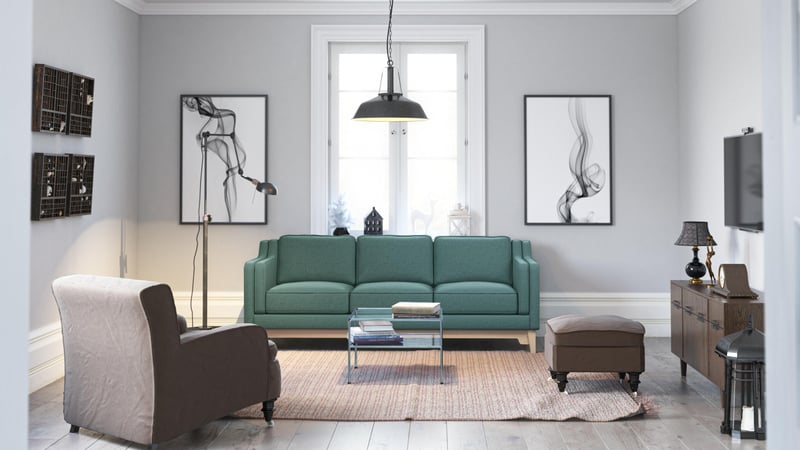
USE CASE #2
3D Product Visualization
One very obvious use case for 3D product modeling is letting your customers view your products from every possible angle. The most common applications in eCommerce include 360° spinning video and interactive 3D product imagery that customers can rotate, zoom in on, and explore.
USE CASE #3
Product Customization & Configuration
3D technology and virtual photography enable an important use case for improving digital customer experience: visual configuration. In the past, product configurators utilized a series of dropdown selectors to allow customers to build their custom products. Maybe, at the end, you'd see a static image of something close to your chosen build, but frequently you wouldn't even see that.
With componentized 3D models, you can allow users to personalize, customize, and configure their products, while adjusting a 2D or 3D product visuals in real-time as they make their selections.
As you can see in TaylorMade's My SIM2 driver configurator, powered by Threekit, users can interact with the custom visual just like the default product visual, spinning it or placing it in an AR environment. For highly-configurable products, this is better enabled by a scalable 3D platform that generates necessary variant visuals in real-time, combining the user's selected components.
USE CASE #4
Augmented Reality Placement
Many of the most critical use cases associated with 3D & AR technology hinge on replicating aspects of the experience of physical shopping. AR placement goes beyond the limitations of physical shopping, allowing you to place the products in your home environment via a mobile phone or webcam.
With AR, you can see how the product fits in its intended physical space, how colors match with other elements of your design, and, most importantly, how you'll feel having and using that product in your home or office.
The applications for AR are as varied as physical products are themselves. You can use AR to virtually test make-up on your face, try on clothes you've never touched, and even create beautiful, celebratory announcements for late-arriving gifts.
And More
More Use Cases Discovered Each Day
While these are a few of the most common use cases for 3D and AR that businesses are using now to boost their bottom-line returns, there are countless others and more being discovered each day. We're to the point where a proper investment in 3D and AR can transform your entire business. Here are a few examples:
- 3D Display Advertising - Include 3D product images on your Google display ads that users can interact with.
- Market Testing - Test products at the design stage with 3D-enabled product launches before a single item has been manufactured.
- Sales Enablement - Create compelling interactive 3D and AR applications for your salespeople to use to showcase products that are otherwise more difficult to visualize.
- Marketing Enablement - Scalably generate custom visuals for targeted ads, remarketing efforts, & cart abandonment sequences.
- Workflow Solutions - Send user-generated 3D configurations directly to manufacturing, already having ensured they meet all product requirements.
- Synthetic Training Data - Use precisely labeled 3D models to generate necessary imagery to train AI engines to perform visual computing tasks.
PART 2:
PROVEN GAINS
More Web Traffic
5X Increase in Organic Engagement
A search engine's #1 priority is pointing searchers to the content they're looking for. To measure their success, they look at customer behavior stats. If customers bounce from your page quickly after finding it on a search engine, the engine will learn that your site is not relevant content for that searcher's profile, and your ranking will drop for related keywords.
By putting interactive 3D and AR assets on your site, you provide users with a significantly more engaging customer experience. The average organic search site session across all industries is right around one minute. Examination of behavior on 3D-enabled eCommerce sites showed an average session length of five minutes.
Google takes notice when your site gets 5x more engagement than your competitors. At Threekit, we've seen this result in significantly higher web traffic for clients across industries and applications.
Customer Results
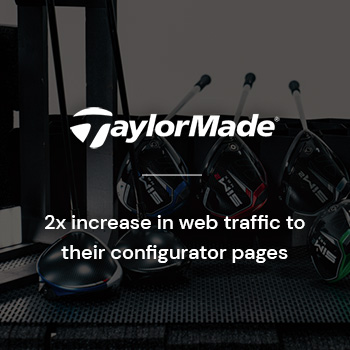
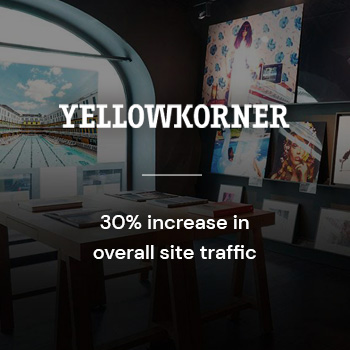
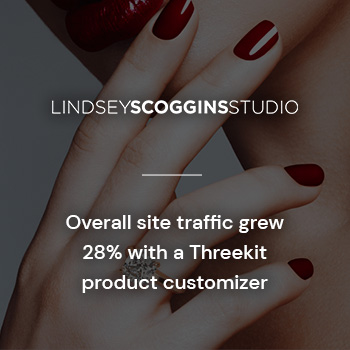
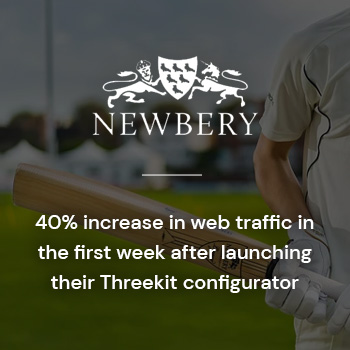
"Threekit makes the impossible possible for Crate and Barrel—through image creation technology that unlocks massive scale and quality to keep our customers engaged and delighted."
Geoffrey Mark, Associate Director CGI Strategy, Crate & Barrel
HIGHER CONVERSION RATES
Shopify: 2x More Conversions with 3D & AR
No one knows more about eCommerce methods than Shopify. Across their 1M+ users, they've seen conversions double when products are presented with 3D & AR. Imagine what doubling your conversions on the same clicks could do for your online business.
Why are these applications so powerful? Product visuals are major drivers of online conversion rates (CVR). With 3D modeling and virtual photography, you can move more quickly and affordably to generate high-end visual presentations of your entire product catalog. The configuration experience helps your customers fall in love with their perfect versions of your products, overcoming objections to the purchase.
At Threekit, we've seen dramatic increases in our customers' conversion rates by improving visuals, even without a fully interactive 3D/AR experience.
Customer Results
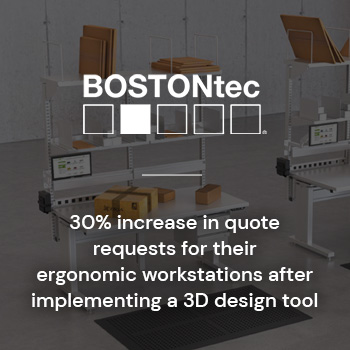
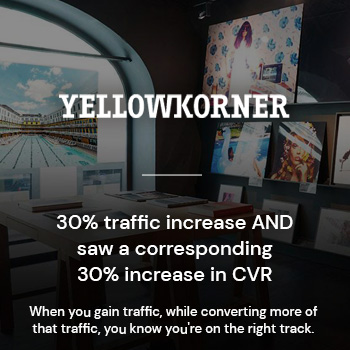
HIGHER AVERAGE ORDER VALUE
40% of Customers Will Pay More for AR
That's right. 40% of people say they are willing to pay a premium just to be able to view a product in AR before they buy it. What other step in your eCommerce funnel are people willing to pay you to experience?
3D configurators also boost average order value (AOV) by streamlining the upsell of custom features and presenting those features in beautiful real-time 3D. Configurators also increase your bundling opportunities. You can even use data from a specific configuration to recommend additional bundled objects that your visitor is most likely to want.
Customer Results
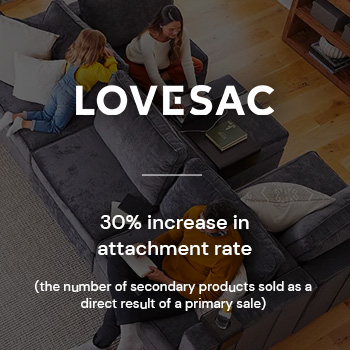
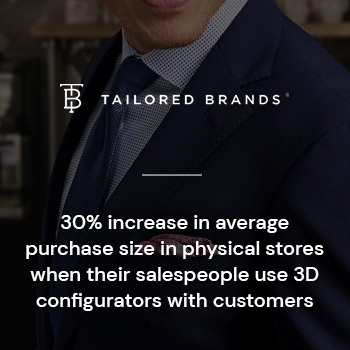
"With all kinds of different nuances and options...a 3D technology like Threekit really helps bring them to life. And so, the experience at lovesac.com has changed for the better. We’re really excited for what that’s brought to the web"
Shawn Nelson, CEO - Lovesac
Reduced Returns
Shopify: 40% Fewer Returns with 3D Visualization
We already learned from Shopify that they were able to double conversion rates with applications of 3D and AR. On top of that, their customers have seen 40% fewer returns.
We don't have to tell you how big a headache returns are for eCommerce brands, but here are some numbers to back it up. 20% of all eCommerce purchases are returned, and that number goes up dramatically for more expensive products. Returns account for 10% of the entire cost of the supply chain.
How does 3D make such a difference? Well, when customers experience products in 3D and AR, they understand the product better and how it fits in their environment. When configured products are visually updated in real-time, they are less likely to be surprised when the product arrives.
HIGHER AVERAGE ORDER VALUE
Virtual Photographs for a Penny on the Dollar
I'll depart from using 3rd-party metrics here to share an incredibly impactful stat from Threekit's own customer base. The average savings of a product photograph produced with Threekit's Virtual Photographer is 99%. That's right. For every dollar spent making traditional product photography, you'll spend one penny.
It's clear why when you look at traditional product photography costs. First, you have to manufacture the different products and variants you want to photograph. Then you ship them to a studio (or ship a photographer to a studio you've rented). Good photographers aren't cheap, and if you try to skimp on cost, you might end up with unusable images or a nearly endless revision cycle.
For the cost of one traditional product photograph, you can create a hundred virtual photographs. Some of our customers have used Virtual Photographer to essentially eliminate their photography budgets. Others have used it to dramatically scale their production of product visuals. With our scalable platform, they input the component materials of their configurable features and automatically generate high-end visuals for an entire product catalog of custom variants. No matter your approach, your ROI skyrockets with virtual photographs enabled by 3D technology.
Customer Results
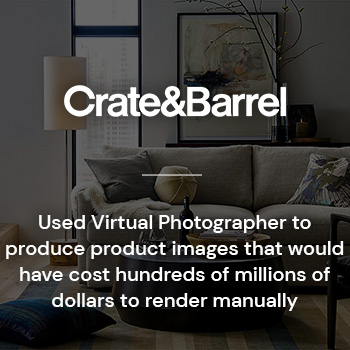
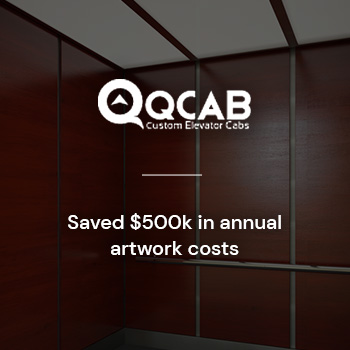
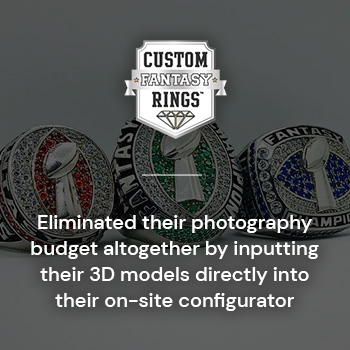
SUMMARY
We've been discussing the primary drivers of ROI from 3D & AR, but this is just a start. In addition to those discussed here, 3D & AR have been shown to increase brand equity, customer retention, earned media placement, and return on ad spend. You also gain valuable data about your customer group that you can leverage to improve your product design and development overall, as well as your targeted marketing.
Take a minute to consider the combined effect of all of these proven ROI drivers. With one initiative, you could boost your web traffic, increase CVR, increase order size, reduce returns, lower costs, build your brand, and acquire customer data.
Hopefully it's clear that AR & 3D are more than just trends. They're instruments of business transformation, capable of providing a sizable lift and competitive advantage to those who move the quickest to invest in these technologies. With industry leaders like Apple, Facebook, and Google all investing mightily in these technologies, a massive wave is building. Each company, large and small, gets to decide whether they want to ride that wave as it grows. As these stats show, those that do are in for the ride of their lives.